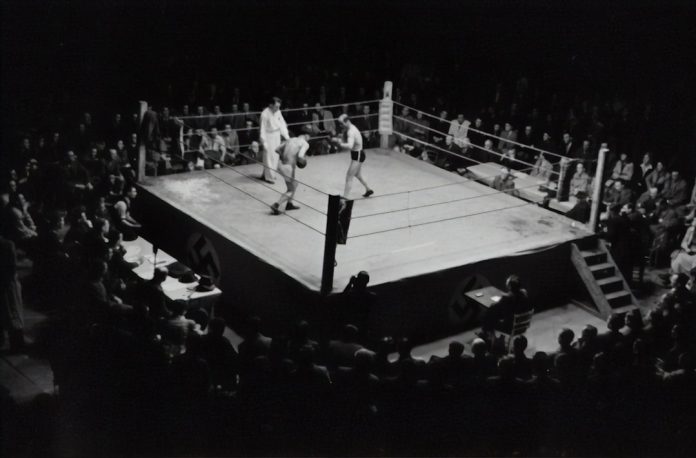Sports card collecting has been a popular hobby for decades, with enthusiasts seeking out rare and valuable cards to add to their collections. One of the key factors in determining the value and authenticity of these cards is grading. Grading is the process of evaluating a card’s condition and assigning it a grade based on a set of criteria. This article will explore the importance of grading in sports card collecting, focusing on football, baseball, basketball, soccer, and hockey cards.
Definition of Graded and Ungraded Sports Cards
Graded sports cards are those that have been evaluated by a professional grading company and assigned a grade based on their condition. The grading process involves examining the card for any flaws or damage, such as creases, stains, or fading. The card is then assigned a grade on a scale from 1 to 10, with 10 being the highest possible grade. Some of the most well-known grading companies include Professional Sports Authenticator (PSA), Beckett Grading Services (BGS), and Sportscard Guaranty (SGC).
On the other hand, ungraded sports cards are those that have not been evaluated by a professional grading company. These cards may still be valuable and authentic, but their condition has not been officially assessed. Ungraded cards can vary widely in terms of condition, with some being in pristine condition and others showing signs of wear and tear.
Importance of Grading in Sports Card Collecting
Grading plays a crucial role in sports card collecting for several reasons. Firstly, it helps determine the authenticity of a card. With the rise of counterfeit cards in recent years, having a card graded by a reputable company provides collectors with peace of mind that they are purchasing an authentic item. The grading process involves thorough examination and authentication measures to ensure that the card is genuine.
Secondly, grading allows collectors to assess the condition of a card. The condition of a card is a significant factor in determining its value. Grading companies use a set of criteria to evaluate the condition of a card, including centering, corners, edges, and surface. By assigning a grade, collectors can easily compare the condition of different cards and make informed decisions about their purchases.
Furthermore, grading can significantly increase the value and investment potential of a sports card. A high-grade card is generally more desirable and sought after by collectors, which drives up its value. Additionally, graded cards are often easier to sell because they come with a trusted third-party authentication and condition assessment. This makes them more attractive to potential buyers and can lead to higher prices in the market.
Graded Football Cards: Rarity and Value
Graded football cards have become increasingly popular among collectors due to their rarity and value. Some of the most valuable graded football cards include rookie cards of legendary players such as Joe Montana, Jerry Rice, and Peyton Manning. These cards are highly sought after by collectors and can fetch high prices at auctions or through private sales.
The grading process has a significant impact on the value of football cards. A high-grade card, such as a PSA 10 or BGS 9.5, will command a much higher price than a lower-grade card. This is because collectors place a premium on cards that are in excellent condition and have been authenticated by a reputable grading company. The rarity of high-grade football cards also contributes to their value, as there are often fewer of these cards in circulation.
Ungraded Football Cards: Pros and Cons
While graded football cards have their advantages, ungraded cards also have their place in sports card collecting. One of the main advantages of ungraded cards is that they can be more affordable for collectors on a budget. Ungraded cards are often priced lower than their graded counterparts, making them more accessible to collectors who may not be able to afford high-grade cards.
However, there are risks associated with ungraded football cards. Without a professional grading assessment, collectors have to rely on their own judgment to determine the authenticity and condition of a card. This can be challenging, especially for novice collectors who may not have the experience or knowledge to accurately assess a card’s condition. There is also a higher risk of purchasing counterfeit or altered cards when buying ungraded.
Graded Baseball Cards: Historical Significance and Investment Potential
Baseball cards have a rich history in sports card collecting, and graded baseball cards are highly sought after by collectors. Some of the most historically significant graded baseball cards include the T206 Honus Wagner, the 1952 Topps Mickey Mantle, and the 1915 Cracker Jack Joe Jackson. These cards are not only valuable but also hold a special place in the history of baseball and sports card collecting.
Grading plays a crucial role in determining the investment potential of baseball cards. High-grade cards from iconic players like Babe Ruth, Ty Cobb, and Jackie Robinson can command significant prices in the market. The rarity and condition of these cards contribute to their value, and collectors are willing to pay a premium for well-preserved examples.
Ungraded Baseball Cards: Authenticity and Condition
Ungraded baseball cards can still hold value for collectors, but there are important considerations to keep in mind. Authenticity is a key concern when purchasing ungraded baseball cards, as there is a higher risk of encountering counterfeit or altered cards. Collectors need to be knowledgeable about the specific characteristics and markings of authentic cards to avoid falling victim to scams.
Condition is another important factor when it comes to ungraded baseball cards. Without a professional grading assessment, collectors have to rely on their own judgment to determine the condition of a card. This can be challenging, as even minor flaws or damage can significantly impact the value of a card. Collectors should carefully inspect ungraded cards for any signs of wear, creases, or discoloration before making a purchase.
Graded Basketball Cards: Popularity and Scarcity
Basketball cards have seen a surge in popularity in recent years, with graded basketball cards becoming highly sought after by collectors. Some of the most popular and scarce graded basketball cards include rookie cards of players like Michael Jordan, LeBron James, and Kobe Bryant. These cards are in high demand and can command premium prices in the market.
Grading plays a significant role in determining the popularity and scarcity of basketball cards. High-grade cards from iconic players are particularly desirable among collectors, as they represent a piece of basketball history. The scarcity of these cards, combined with their condition and authentication, contributes to their value and makes them highly sought after.
Ungraded Basketball Cards: Bargain Hunting and Risks
Ungraded basketball cards can offer opportunities for collectors to find bargains and add to their collections at a more affordable price. While high-grade basketball cards can be expensive, ungraded cards of the same players can often be found at lower prices. This allows collectors on a budget to still enjoy the hobby and acquire cards of their favorite players.
However, there are risks associated with ungraded basketball cards. As with other sports, there is a higher risk of encountering counterfeit or altered cards when purchasing ungraded. Collectors need to be knowledgeable about the specific characteristics and markings of authentic basketball cards to avoid falling victim to scams. Additionally, the condition of ungraded cards can vary widely, so collectors need to carefully inspect them for any signs of wear or damage before making a purchase.
Graded Soccer and Hockey Cards: Emerging Markets and Future Trends
While football, baseball, and basketball have traditionally dominated the sports card collecting market, there is an emerging market for graded soccer and hockey cards. As these sports gain popularity worldwide, collectors are starting to recognize the value and investment potential of graded cards from soccer and hockey players.
The future trends in grading for soccer and hockey cards are promising. As more collectors and investors enter these markets, the demand for graded cards is likely to increase. This could lead to a rise in the value of high-grade cards from iconic soccer and hockey players, making them even more desirable among collectors.
Grading plays a crucial role in sports card collecting, helping determine the authenticity, condition, and value of cards. Graded cards provide collectors with peace of mind that they are purchasing authentic items and allow them to compare the condition of different cards. Graded cards also have higher investment potential due to their desirability among collectors.
However, ungraded cards still have their place in sports card collecting, offering more affordable options for collectors on a budget. There are risks associated with ungraded cards, such as the higher risk of encountering counterfeit or altered cards and the need for collectors to accurately assess the condition themselves.
In conclusion, both graded and ungraded cards have their pros and cons, and collectors should consider their own preferences and budget when deciding which type of card to pursue. Ultimately, the joy of sports card collecting comes from the thrill of the hunt and the satisfaction of building a collection that reflects one’s passion for the game.
If you’re interested in building your ultimate sports card collection, you may also want to check out the article “From Rookie to MVP: Insider Tips & Tricks for Building Your Ultimate Sports Card Collection” on Breakaway Cards. This article provides valuable insights and strategies for collectors looking to take their collection to the next level. Whether you’re a seasoned collector or just starting out, this article offers expert advice on how to navigate the exciting world of sports card collecting. (source)



